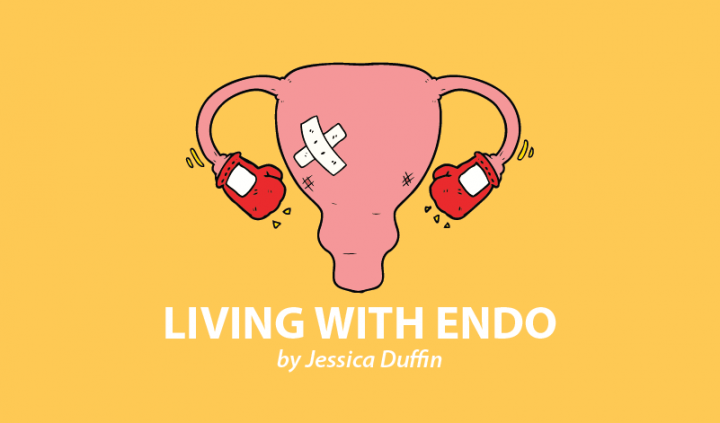I’ve been really struggling with my small intestinal bacterial overgrowth (SIBO) this year.
It all kicked off when I started a low-histamine and low-oxalate diet for my interstitial cystitis in January. While the diet helped other symptoms in many ways, it strangely seemed to worsen my then undiagnosed SIBO, which I was managing fairly well.
I’m not undergoing SIBO treatment until I take some time off work in the fall. For now, I’m focusing on symptom management. However, much like my bladder, everything seems to aggravate my gut, and there’s little rhyme or reason to its protests. Over the past several weeks, I’ve become so uncomfortable that I decided to give a short-term low-sulfur diet a go.
I have methane, hydrogen, and suspected hydrogen sulfide SIBO. Hydrogen sulfide is tricky to treat, and people respond differently to different treatments. A low-sulfur diet can sometimes help with symptoms management, but the research is conflicting, and leading SIBO experts have varying results with it.
I did further research and came across Dr. Greg Nigh’s low-sulfur protocol. He theorizes that hydrogen sulfide largely results from difficulty metabolizing sulfur. Nigh uses this low-sulfur protocol, combined with some detox methods, as a form of treatment for irritable bowel syndrome and SIBO. Most SIBO doctors, including Dr. Allison Siebecker, currently use a low-sulfur diet for symptom relief only.
Nigh has seen incredible results. While more research needs to be done, the diet was worth a try — especially because I like to experiment on myself to better help and understand my clients’ experiences.
I followed Dr. Michael Ruscio’s low-sulfur diet, because it was a free resource I could easily get my hands on. The diet excludes cruciferous veggies, beans, nuts (except for macadamias), grains (other than white rice), cacao, certain herbs and spices, eggs, most meats, and a number of other food groups such as caffeine, sauces, processed foods, etc. I don’t eat meat, so the biggest changes for me were ruling out cruciferous vegetables, beans and pulses, nuts, cacao, and certain staples such as coconut oil, garlic, and onion.
I learned from my elimination diet mistakes and planned an entire week of meals and snacks before doing a big shopping trip. The result wasn’t cheap, so I urge you to make sure to have the time and the money to dedicate to this protocol. It was worth the investment, and the week’s cooking went smoothly with little additional stress.
The diet was much easier than my last elimination diet. Some meals were even pretty tasty. Overall, I still had a lot of SIBO symptoms, but I did experience some interesting progress. For example:
- Day 1: I was groggy.
- Day 2: My bladder pain worsened.
- Day 3: The bladder pain significantly decreased and my gut area felt “cleaner.”
- Day 4: My bloating lessened and I felt more comfortable.
- Day 5: I had renewed energy.
While the bloating was less painful and extreme, it was still present and obvious. But I was relieved to have a break from the worst of it, and that’s largely what this experiment was about.
I’m not sure whether it was the removal of sulfuric foods or the removal of high-fiber foods, such as beans, nuts, broccoli, cabbage, and cauliflower, that made the difference. Responding to the diet was still promising and gave me some much-needed respite.
Starting a SIBO-specific diet would be most beneficial for my symptoms. However, this diet isn’t recommended long-term, and it’s supposed to be done either in conjunction with treatment or after it, so I won’t start until the fall.
In the meantime, however, the low-sulfur protocol has shown me that my diet was incredibly sulfur-rich, and that some variation couldn’t hurt. I unknowingly had adopted some of the habits I’d settled into during the low-histamine and low-oxalate diet. During that time, I was left with little to eat besides sulfur-rich foods. It’s no wonder that I’m now cautious of histamines — I ended up ramming my gut with cruciferous veggies.
Cruciferous vegetables are wonderful for supporting endometriosis and healthy hormones, but sulfuric foods made up the foundation of my diet. By taking just five days to restrict them, I’ve actually opened my diet back up again.
***
Note: Endometriosis News is strictly a news and information website about the disease. It does not provide medical advice, diagnosis, or treatment. This content is not intended to be a substitute for professional medical advice, diagnosis, or treatment. Always seek the advice of your physician or other qualified health provider with any questions you may have regarding a medical condition. Never disregard professional medical advice or delay in seeking it because of something you have read on this website. The opinions expressed in this column are not those of Endometriosis News or its parent company, BioNews, and are intended to spark discussion about issues pertaining to endometriosis.

